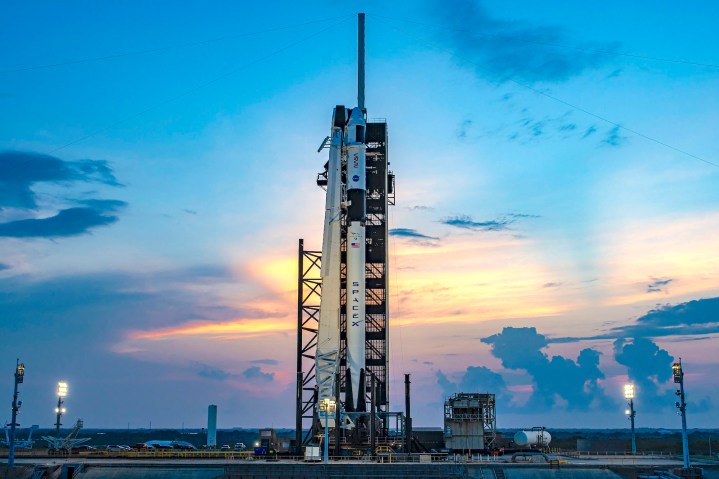
UPDATE: About four hours prior to the targeted launch time, SpaceX posted a message saying it was calling off Friday morning’s launch attempt and would now target early Saturday morning instead.
SpaceX and NASA are now targeting no earlier than Saturday, August 26 for Falcon 9 to launch Dragon to the @space_station. The new launch date provides teams additional time to complete and discuss analysis. The vehicles remain healthy and crew is ready to fly →… pic.twitter.com/ojWTwRTS8v
— SpaceX (@SpaceX) August 25, 2023
NASA and SpaceX are preparing to launch four more astronauts to the International Space Station (ISS).
The mission had been scheduled to get underway from the Kennedy Space Center in Florida at 3:50 a.m. ET (12:50 a.m. PT) on Friday morning, but late on Thursday SpaceX said it was now targeting no earlier than 3:27 a.m. ET (12:27 a.m. PT) on Saturday, August 26. A backup opportunity is available at 3:04 a.m. ET (12:04 a.m. PT) on Sunday.
The reason for the delay isn’t clear, with SpaceX only saying that the crew and vehicle were fine and that the schedule change would give it “additional time to complete and discuss analysis.”
When the mission does get underway, the early stages of the flight will be live-streamed using multiple cameras, with real-time audio feeds from Mission Control and the crew capsule also part of the broadcast.
Just minutes after it powers the capsule to space, viewers can also enjoy the always-remarkable spectacle of the reusable first-stage booster returning to Earth. While it usually lands on a droneship off the coast of Florida, this mission will see it touching down at Landing Zone 1 close to the launch site.
Here’s everything you need to know to watch the live stream.
After reaching the space station on Saturday, the astronauts — NASA’s Jasmin Moghbeli, the European Space Agency’s Andreas Mogensen, Satoshi Furukawa of the Japan Aerospace Exploration Agency, and Konstantin Borisov of Roscosmos — will spend the next six months conducting science and technology demonstrations that could benefit humanity on Earth, and also preparing for human exploration beyond low-Earth orbit.
The Crew Dragon spacecraft supporting the Crew-7 mission previously flew NASA’s Crew-3 and Crew-5 missions to and from the ISS.
Be sure to check SpaceX’s social feeds for the latest information on the launch schedule.
To learn more about everyday life on the orbital outpost 250 miles above Earth, check out these revealing videos made by visiting astronauts over the years.


